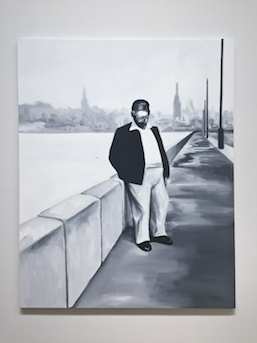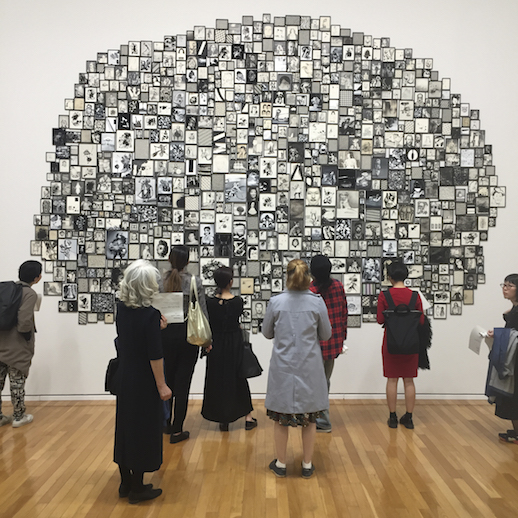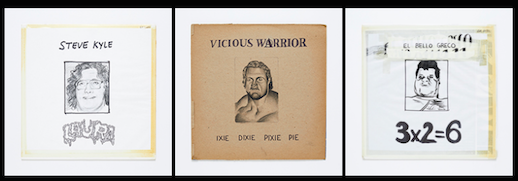Peekaboo!

What separates “Peekaboo” from past shows like The Great Circus is in the subtle nuance of the work. This show is about faces, and not only that, but the expressions they wear in the eyes. Perhaps it goes without saying, but peekaboo is a game played with an infant, where one player hides her face before abruptly bringing it into view, saying “peekaboo!” and startlingly the baby (usually to its delight). The expressions in Gokita’s works are bizarre to the point that the viewer finds – also often with delight – the work to be shocking. Eyes stare back blankly, a few feature animal-like pupils, others carry ethnic features that come off as jarring in the situation the painting presents. Even more unsettling is that the viewer unconsciously takes notice and right as a conclusion can be drawn, encounters another painting devoid of any face, or one so contorted nothing can be determined from the expression. After being conditioned by Gokita’s work, he plays with us then refuses us anything at all. One is left feeling infantile.
There are also playful variations in applications of paint. Some works are rather realistically detailed, like Cute (2015), while in others such as Sacrifice (2018), the figure is rough around the edges, simulating torn paper. Some are entirely devoid of detail, opting to let the nothingness of the white stand in their place, as in Secret Society (2018), while Commemorative Photo (2017) simply comes off as unfinished. Sometimes paint is applied impressionistically, like in the woman’s jacket of Grand Reception (2018), while the bouquet in How to Marry a Millionaire (2015) is reminiscent of Picasso’s Guernica with its sharp perspectives. Lunch with the Emperor (2018) offers a playful nod to Vermeer in subject and composition, which carries over into many of the paintings that feature an interior. There are usually sharp lines breaking Gokita’s compositions in the backgrounds, represented by either a wall corner or doorframe, which allows Gokita to change gradations for a more dynamic effect. And quite like a photographer, he uses picture frames on the walls in his paintings as squares to balance out compositions, much like a frame line in photography. This photographic angle is compounded in the painting Brilliant Corners (2018), a reverse of the famous Henri Cartier-Bresson photo of Jean Paul-Sartre taken in 1946, around the same era that the Thelonious Monk album the painting is named after was released. This is all perhaps related somehow…in Gokita’s curious world.

Yet if Gokita had wrapped up the exhibition with only these figurative works the surprise he has in store for us wouldn’t be as strong. Instead, he brings back a similar theme of smaller unevenly sized square frames featuring both figurative and abstract images. They draw the viewer in if not by the sheer number of works, then by the effect of the small frames when bunched together. This serves almost as a transition to a series of ill-defined black inkblots that again puzzle us with childlike wonder. Aesthetically it fits, but the reason becomes curious since we have so far encountered mostly figurative paintings with engagingly expressive subjects. Gokita’s uninhibited stylistic freedom of alternating from figurative to abstract is the game that “Peekaboo” presents.
Rounding out the show in the last corridor is a series of record sleeves on which Gokita has drawn wrestlers, each with a different typography. A natural extension of the theme of 1960s–1970s American counterculture, it is both playful and delightfully unpolished. Too much in contemporary art is simply polished and expensive: expensive to make, expensive to transport, and of course, expensive to purchase. It is rare to see something that can be done simply in one’s free time, perhaps with guests over listening to music and having some drinks. This concept itself is also playful in nature, as Gokita first exhibited his works in Tokyo record shops, randomly placing them in with the actual records for sale. It is to Gokita’s credit that he retains this element of fun as his stature in the ever-serious art world increases. It is surprisingly kind of childlike in its lack of inhibition.

This exhibition is eligible for ¥200 MuPon discounts.



